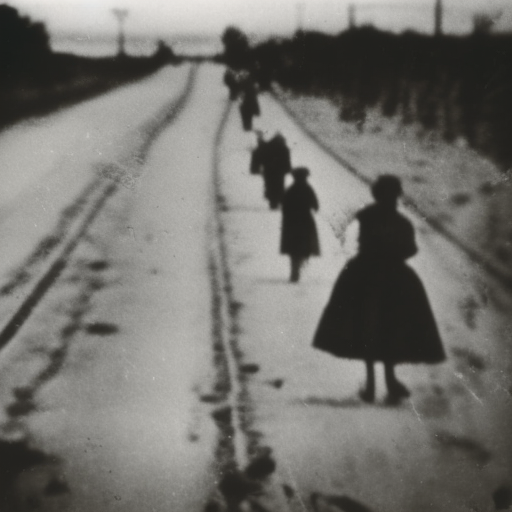Summary:
The Trail of Tears was a forced relocation of Native American tribes from their ancestral lands in the southeastern United States to designated Indian Territory in present-day Oklahoma. This tragic event took place between 1838 and 1839 and resulted in the deaths of thousands of Native Americans due to exposure, disease, and starvation.
Background:
In the early 19th century, the United States government sought to expand westward, encroaching upon the lands inhabited by several Native American tribes, including the Cherokee, Creek, Choctaw, Chickasaw, and Seminole. The Indian Removal Act of 1830 authorized the relocation of these tribes to lands west of the Mississippi River.
Forced Relocation:
The Cherokee Nation, one of the largest and most advanced tribes in the Southeast, resisted removal. In 1838, under the orders of President Andrew Jackson, the U.S. Army forcibly removed approximately 16,000 Cherokee people from their homes in Georgia, Tennessee, Alabama, and North Carolina. They were rounded up and forced to march westward on a journey that became known as the Trail of Tears.
The Journey:
The journey was arduous and devastating for the Cherokee people. They were given little time to prepare and were forced to leave behind their homes, possessions, and ancestral lands. The Cherokee were herded into makeshift stockades and then forced to march hundreds of miles to the designated Indian Territory.
Conditions:
The conditions during the journey were deplorable. The Cherokee were ill-equipped for the harsh winter weather, and many lacked warm clothing and adequate shelter. They were often subjected to harsh treatment by the soldiers overseeing the removal, with reports of beatings and abuse. Food and supplies were scarce, leading to widespread hunger and malnutrition.
Loss of Life:
The Trail of Tears resulted in the deaths of thousands of Cherokee people. Many died from exposure to the elements, while others succumbed to diseases such as smallpox, measles, and dysentery. The exact number of casualties is unknown, but estimates range from 4,000 to 6,000 deaths.
Aftermath:
Upon reaching Indian Territory, the Cherokee and other tribes faced further hardships. The land allocated to them was often unsuitable for agriculture, and they struggled to rebuild their lives in unfamiliar territory. The forced removal had a profound and lasting impact on the Native American tribes involved, leading to the loss of their ancestral lands, cultural heritage, and way of life.
Legacy:
The Trail of Tears remains a dark chapter in American history, highlighting the injustices inflicted upon Native American tribes during the westward expansion of the United States. It serves as a reminder of the devastating consequences of forced relocation and the ongoing struggle for Native American rights and recognition.
Conclusion:
The Trail of Tears was a tragic event that saw the forced relocation of Native American tribes from their ancestral lands to designated Indian Territory. The journey was marked by harsh conditions, disease, and starvation, resulting in the deaths of thousands of Native Americans. The legacy of the Trail of Tears serves as a reminder of the injustices suffered by Native American tribes and the ongoing struggle for their rights and recognition.












